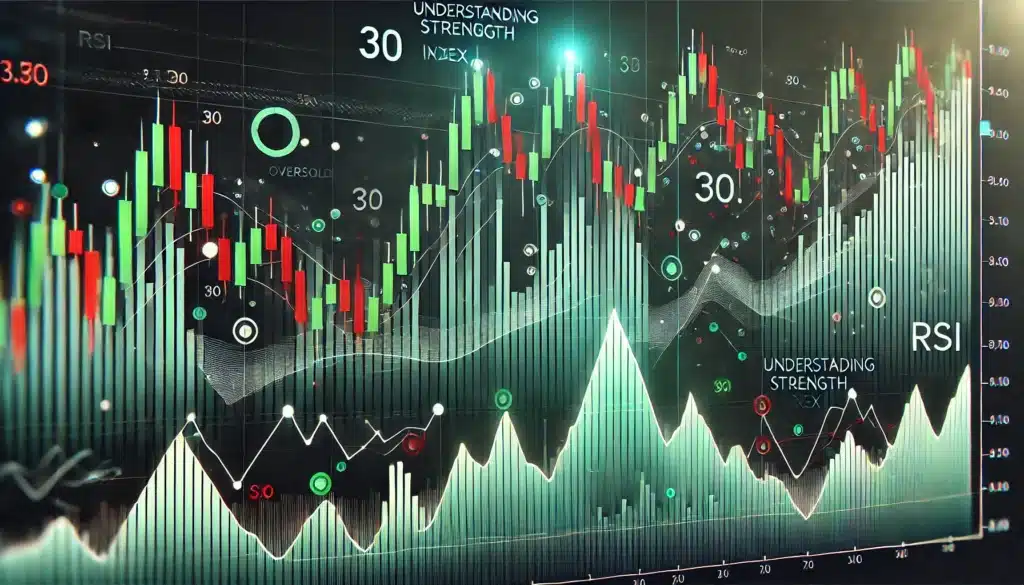How To Succeed Trading Stocks and Options in a Volatile Market
How to Succeed Trading Stocks and Options in a Volatile Market

Introduction to Succeeding in a Volatile Market
Trading in a volatile market can be both challenging and rewarding. While the rapid price movements can create significant opportunities for profit, they also come with heightened risks. To succeed in trading stocks and options during such market conditions, traders must adopt the right strategies, maintain discipline, and stay informed. In this guide, we’ll explore the key elements you need to succeed in a volatile market and how to approach stocks and options with a mindset focused on risk management and opportunity.
A volatile market is characterized by large price swings, often driven by economic events, earnings reports, or global news. While these conditions can increase profit potential, they also require a more calculated approach. By using proven strategies and maintaining a level-headed approach, traders can thrive even in the most uncertain market environments.
Understanding Volatility: The Key to Succeeding in a Volatile Market
What Is Market Volatility?
Market volatility refers to the rapid and unpredictable price movements of stocks or options. Volatility can be driven by various factors such as geopolitical events, economic reports, company earnings, or even broader market sentiment. When volatility is high, price fluctuations are more frequent and often larger, which can lead to both increased risk and reward.
Why Volatility Matters for Traders
Volatility is crucial for traders because it affects pricing, the speed of price changes, and the potential profit or loss on a trade. While some traders may shy away from volatility due to the risks involved, others seek it out for the potential to make quick gains. Understanding how to navigate this environment is essential for success.
Adapting Your Trading Strategy to Volatility
Risk Management: The Foundation for Succeeding in a Volatile Market
One of the most critical components of succeeding in a volatile market is robust risk management. While the temptation to chase high rewards may be strong, traders must manage their downside risks to protect their capital. Key principles for risk management include:
- Setting stop-loss orders to limit potential losses
- Adjusting position sizes to reflect increased risk
- Diversifying your trades to reduce the impact of a single bad trade
In a volatile market, protecting your downside is just as important—if not more—than focusing on potential profits.
Embrace Flexibility in Your Trading Approach
Volatile markets require traders to remain flexible in their approach. This could mean adapting your strategies to shorter time frames, using more conservative risk management techniques, or adjusting your profit expectations. Successful traders know how to pivot quickly and make informed decisions based on current market conditions.
Trading Options: A Strategic Way to Succeed in a Volatile Market
Options trading is particularly well-suited to volatile markets. When stock prices swing wildly, options can offer strategic ways to profit, such as through strategies that benefit from either price increases or declines. In addition, options can be used to hedge against risk, offering protection against potential losses in a stock position.
Long Puts: Protecting Against Downside Risk
In a volatile market, one common strategy is purchasing long puts to protect against downside risk. A put option gives you the right to sell a stock at a specific price, allowing you to mitigate losses if the stock price drops sharply. This approach is often used by traders who expect significant price declines but want to avoid shorting the stock.
Straddle Strategy: Profiting from Large Price Movements
A popular options strategy during high volatility is the straddle. In this approach, traders purchase both a call option and a put option with the same strike price and expiration date. This allows you to profit from large price swings in either direction, making it an excellent strategy for volatile markets.
Trade Liquid Stocks and Options
When markets are volatile, liquidity becomes even more important. Liquidity ensures that you can quickly enter and exit positions without experiencing significant slippage in price. The most liquid stocks and options are typically large-cap stocks, major indices, and high-volume ETFs like SPY or QQQ. Focus on highly liquid assets to avoid getting stuck in positions that are hard to exit.
Mastering Emotional Discipline: The Hidden Key to Succeeding in a Volatile Market
Managing Emotions in High Volatility
Volatile markets can create emotional stress, especially when prices swing dramatically within short periods. Fear and greed can drive irrational decision-making, causing traders to exit trades too early or chase losses. To succeed in a volatile market, traders must develop emotional discipline and stick to their trading plan, regardless of the market’s fluctuations.
Develop a Clear Trading Plan
A well-defined trading plan is essential in volatile markets. It helps prevent emotional decision-making by providing clear guidelines for entering and exiting trades. A good trading plan should include:
- Specific entry and exit points
- Position sizing based on risk tolerance
- A clear stop-loss strategy to manage downside risk
By following a disciplined trading plan, you can avoid emotional reactions to market volatility and make more rational decisions.
Leveraging Technical Analysis in a Volatile Market
Support and Resistance Levels: Identifying Key Price Points
In volatile markets, price often swings between key support and resistance levels. Identifying these levels can help traders make better decisions about when to enter or exit a position. Support levels act as price floors, while resistance levels serve as price ceilings. In high-volatility environments, prices often test these levels multiple times, providing traders with potential entry and exit points.
Indicators to Use in Volatile Markets
In volatile markets, certain technical indicators can provide valuable insights. These include:
- Bollinger Bands: Bollinger Bands expand and contract based on market volatility, helping traders identify potential breakouts or reversals.
- ATR (Average True Range): ATR measures market volatility by calculating the average range of price movements over a given period. A rising ATR often signals increasing volatility.
- RSI (Relative Strength Index): RSI can help traders determine overbought or oversold conditions, providing opportunities to enter or exit trades during extreme price movements.
Common Mistakes to Avoid in a Volatile Market
Overleveraging: A Recipe for Disaster
One of the biggest mistakes traders make in volatile markets is overleveraging. With heightened volatility comes increased risk, and using too much leverage can lead to catastrophic losses. It’s essential to trade within your means and avoid using excessive margin in uncertain market conditions.
Chasing Trades Without a Plan
In fast-moving markets, it can be tempting to jump into trades impulsively. However, chasing trades without a well-defined plan often leads to poor decision-making and losses. Stick to your trading strategy and resist the urge to follow the crowd blindly.
Ignoring Risk Management Principles
Many traders focus on the potential for big profits during volatile markets but neglect the importance of risk management. Failing to use stop-loss orders or properly size your positions can lead to significant losses, especially when markets move rapidly.
Conclusion on Succeeding in a Volatile Market
Succeeding in a volatile market requires a combination of sound strategies, emotional discipline, and a deep understanding of the risks involved. Whether you’re trading stocks or options, adapting your approach to fit market conditions is key to capturing opportunities while protecting your capital. Remember, volatility offers both danger and opportunity; the traders who succeed are those who stay disciplined, manage risk effectively, and remain adaptable.
FAQ Section
Why is risk management so important in volatile markets?
Risk management is essential in volatile markets because the rapid price movements can lead to large losses if not properly managed. Using stop-losses, adjusting position sizes, and diversifying your trades are key risk management strategies to protect your capital.
How can options help in volatile markets?
Options offer strategic advantages in volatile markets by allowing traders to profit from both upward and downward price movements. Strategies like long puts, straddles, and spreads can help manage risk while taking advantage of volatility.
What are some common mistakes traders make in volatile markets?
Common mistakes include overleveraging, chasing trades impulsively, and neglecting risk management principles. These mistakes can lead to significant losses in fast-moving markets.
This comprehensive guide covers the essential strategies and principles to help you succeed in trading stocks and options in a volatile market. By mastering risk management, remaining emotionally disciplined, and leveraging tools like technical analysis and options strategies, you can navigate the challenges and reap the rewards of high volatility.
Check out our articles on:
- Introduction to Options Trading
- Mastering Butterfly Spreads
- The Power of Diagonal Spreads
- The Power of Iron Condors
- The Power of Vertical Credit Spreads
Elevate Your Options Trading Skills
Ready to master trading options? Join our community for in-depth education on options trading, live trading sessions, and expert analysis of options trading strategies. Sign up today to start profiting from market swings using advanced options trading strategies!
Below are the links:
To your success,

Billy Ribeiro is a renowned name in the world of financial trading, particularly for his exceptional skills in options day trading and swing trading. His unique ability to interpret price action has catapulted him to global fame, earning him the recognition of being one of the finest price action readers worldwide. His deep comprehension of the nuances of the market, coupled with his unparalleled trading acumen, are widely regarded as second to none.
Connect with us:






